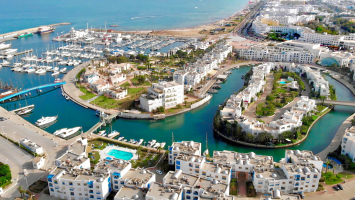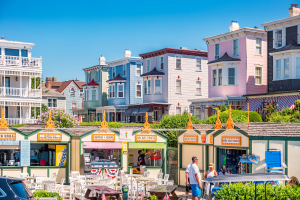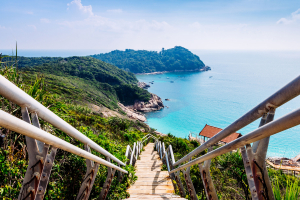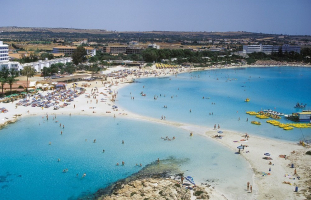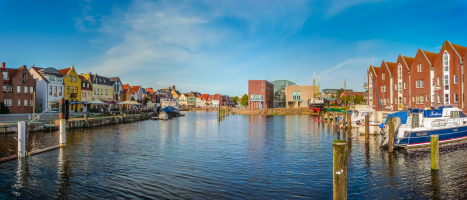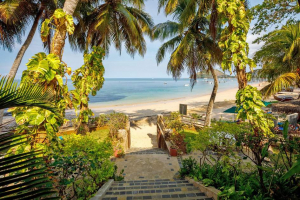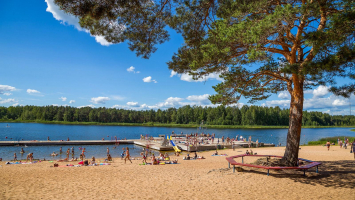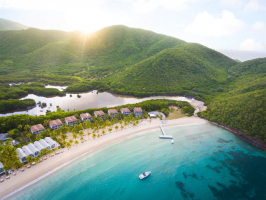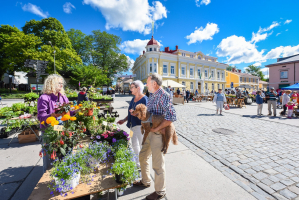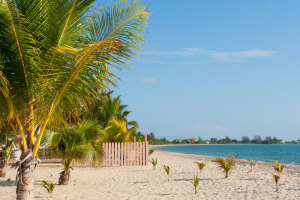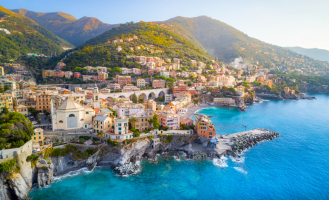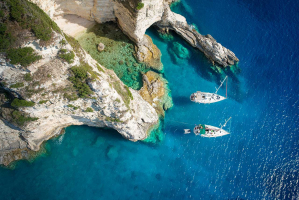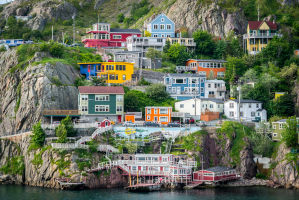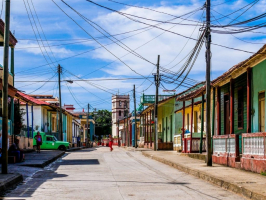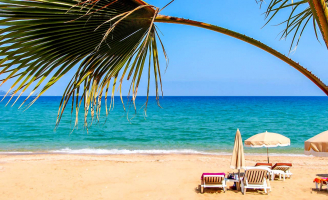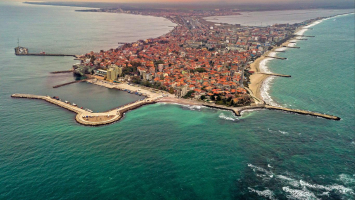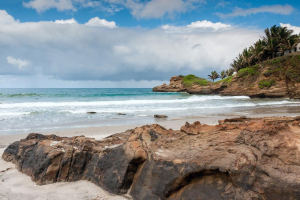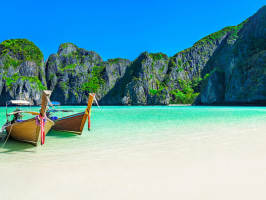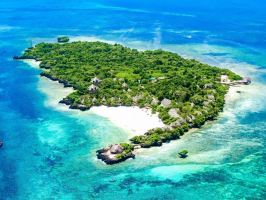Top 14 Most Beautiful Coastal Towns in Greece
Who doesn't picture a dream vacation when they think about Greece? It is a nation where culture, the sun, and the beach coexist, thus it gives a wide range of ... read more...opportunities to travelers that choose to visit this location. The most picturesque seaside towns in Greece will be discussed in this post if you are considering traveling there. You can plan your journey more easily if you do it in this manner.
-
The town of Kastro is 85 meters above sea level and is situated on a narrow, steep, and mountainous peninsula three and a half kilometers to the east of Apollonia. Since the protogeometric era (1.100 BC), it has been continuously inhabited, and it served as Sifnos's capital until 1836. The toponym "Kastro," which means "castle" in Greek, derives from the settlement's distinctive spatial and architectural layout.
There are five historic galleries, or "loggias," that serve as the only interior entrances to the continuous two- or three-story buildings' first line of impenetrable medieval external walls. There are very few courtyards in these residences, and the lack of squares and the small streets both reflect the need to conserve space.This location, which is on top of a cliff and gives stunning sea views, is what most distinguishes the place. You can find remnants from earlier historical eras in its streets, including walls, a fortress, and an ancient acropolis. Its winding streets also draw attention since they take you to a different time and way of life than what you have been able to experience up until now. If you go to Greece, you must visit Kastro de Sifnos, which has a port, a little beach, and even a cemetery that, rather than displaying melancholy, displays a number of works of art.
- Location: Cyclades
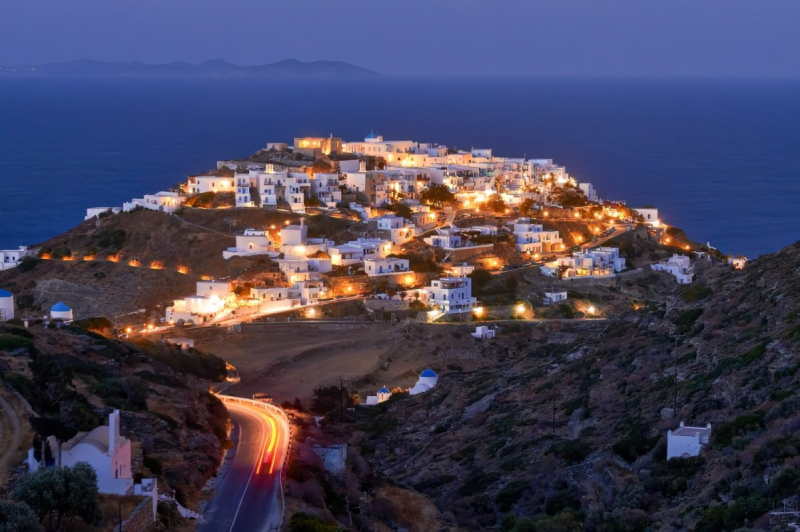
https://www.travel-zone-greece.com/ 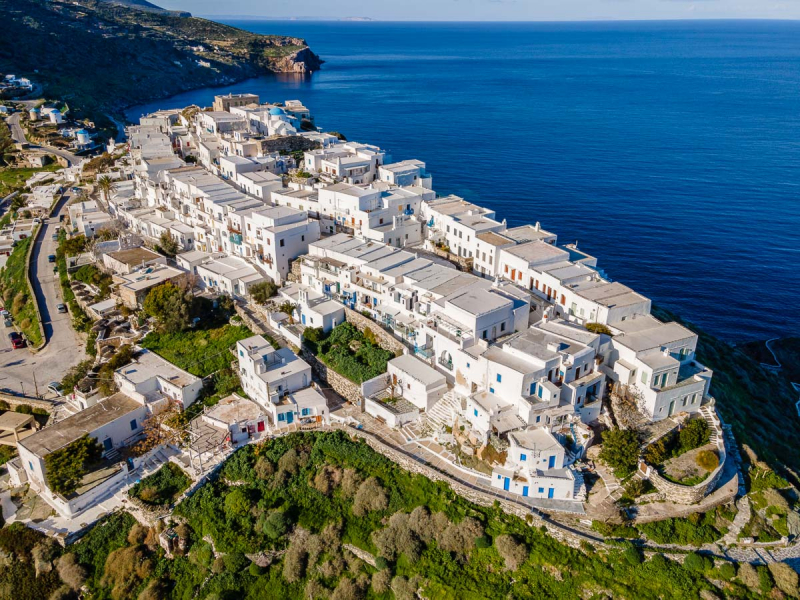
https://www.sifnosestate.com/ -
Naoussa is no longer a well-kept secret and has a little bit of the cosmopolitan atmosphere that Mykonos Chora is renowned for, so it's probably not the place for you if you're seeking for a tranquil area with an authentically Greek feel. Although it hasn't yet been Disneyfied, it does pander to extremely contemporary tastes.
There are a few authentic Greek tavernas, but they are outnumbered by upscale restaurants serving international cuisine and stylish cocktail lounges, as well as a hefty helping of pricey designer clothes stores. Prices for food and beverages are higher than usual. While the winding, cobbled streets are fun to explore, they will be packed with tourists during the busy summer months. There are a few venues to dance until dawn after the late bars open up after midnight.
Naoussa is well-known for its wealth because it is surrounded by fruit orchards and vineyards. The region is well-known for its jam, wine, and yearly international film festival. With activities like cooking courses, spa treatments, and tasting tours, this location is perfect for soothing your senses.
It is notable for its many terraces by the sea where you may take advantage of a cool drink, for example, as well as its alleys with white buildings, Orthodox churches, gorgeous port, and castle remains. Put Naoussa on your list without hesitation.
The picturesque whitewashed harbor village of Naoussa, sometimes spelled Naousa, is one of the Cyclades' most well-liked tourist sites. It's without a doubt one of the highlights of any vacation to this exceptional Greek island, located at the northernmost point of Paros.
- Location: Macedonia
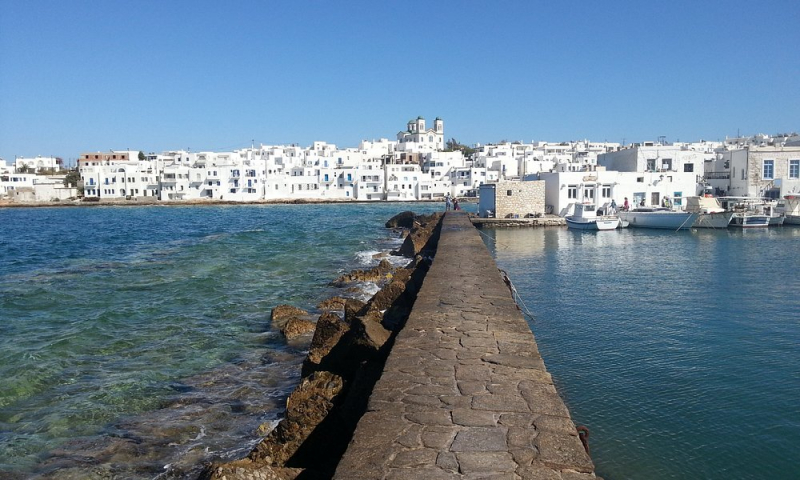
https://www.tripadvisor.com 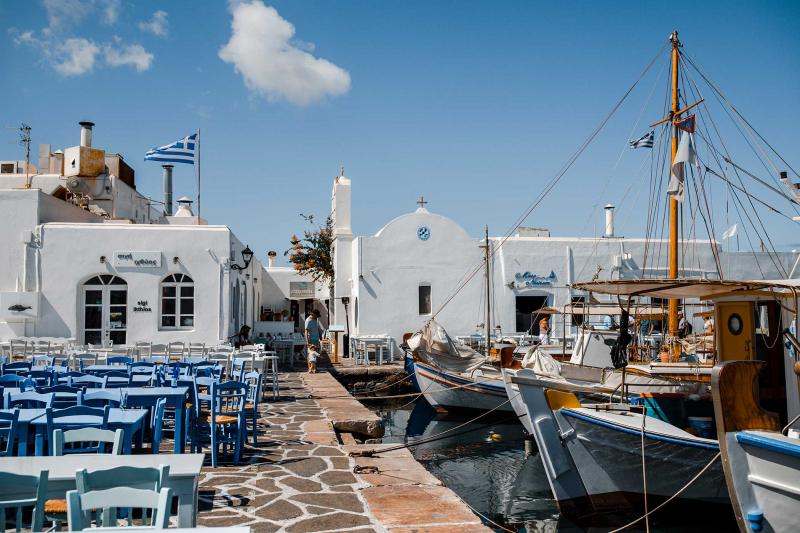
https://www.danaberez.com/ -
The homes of the Klima settlement, a historic fishing community, were once used to store boats and fishing equipment. A few of them are still in use today, but the most have been transformed for tourism. The two-story homes are practically carved out of the rocks. The boats are kept in the first one, which also serves as a residence. Klima is filled with domestic cats that are always happy to pose for pictures, just like any decent Cycladic village worth its salt.
Klima, one of Milos' smaller towns with less than 20 permanent residents, is a destination that is unavoidable for all tourists. On one side of the Gulf of Milos, near to the village of Tripiti, is this lovely fishing community. The renowned boat homes in Klima known as "syrmata" are the reason for its modern-day popularity.
The area fisherman used Syrmata, which are old, traditional two-level homes, throughout the previous century. The first story would be a home, with the ground floor serving as a boat storage area. The positioning of the water and the brightly colored wooden doors and windows are what make these homes unique.
- Location: Plaka
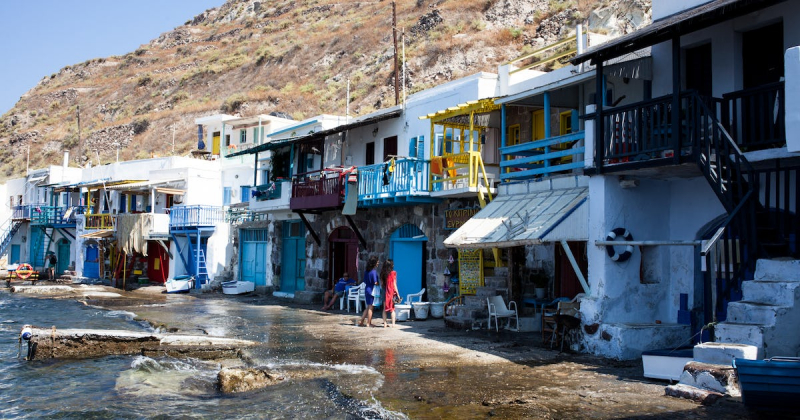
https://www.theoutbound.com 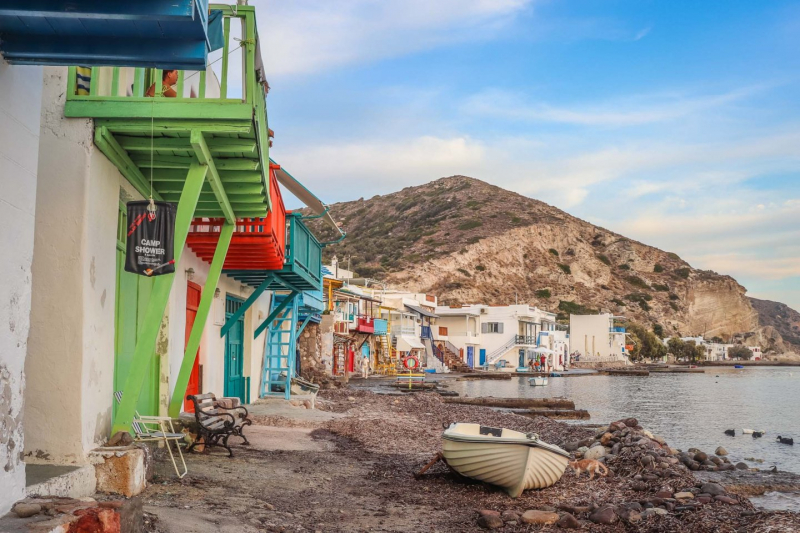
https://theworldismyplayground.org/ -
Vothonas is one more of Greece's most stunning beach towns. It is one of the island's most scenic settlements. It is situated 5 kilometers from Fira, the island's city, in the exact middle of Santorini. You'll be pleasantly surprised by Vothonas' tranquility and peace as you breathe it. It is a traditional settlement carved out of the rock where you can see the oldest structure in town, the Santa Ana church, which was constructed in 1827. It has an old testament-themed wooden mural that has been intricately created.
This unique community is located in a five-kilometer-long ravine. Santorini's magnificent inhabitants built their homes on the cliffs of the ravines. They built roofs using a smear produced from volcanic soil that stands alone and is unsupported. This is an opportunity to be inspired by the villagers' practicality who found refuge in the "yposkafa" (dwellings carved in the rock). Don't forget to stroll up to Panagia Trypa and light a candle while you're there, either! Advice: You may view whatever the 1956 earthquake left behind in Mesa Gonia. The "kanaves" (cellars) are a testament to Santorini's past commercial prowess as a hub for wine manufacturing.
- Location: Santorini
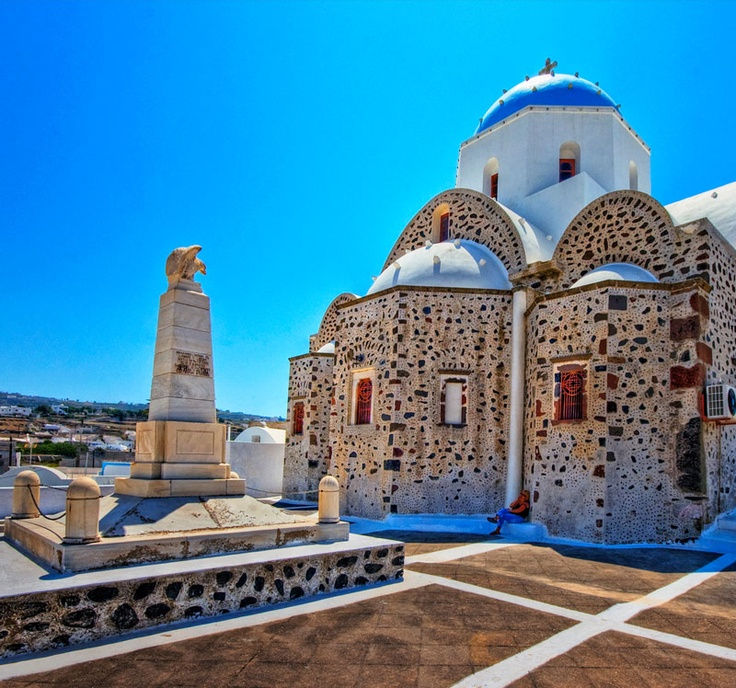
https://www.pinterest.com/ 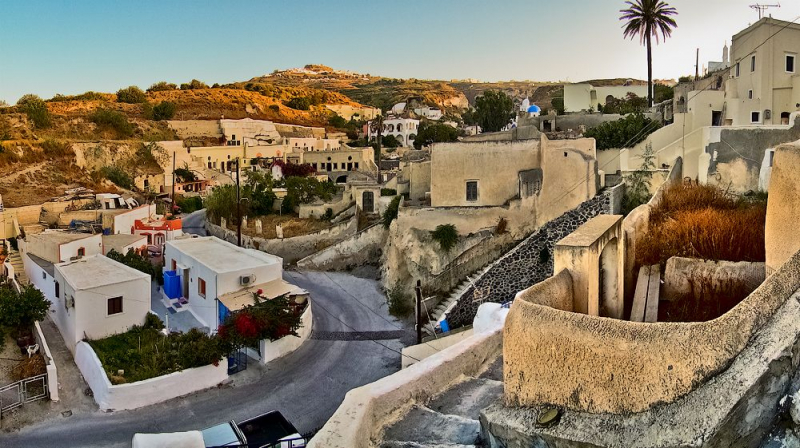
https://www.pinterest.com/ -
The main town on the island is Mandraki, the capital of Nisyros in Greece. One more of the fishing communities along the Milos coast is Mandrakia. It is a tiny harbor where fishing boat shelters have been carved out of the volcanic rock of the island. Mandrakia has a limited number of attractions, but those that it does have are very potent. One has the opportunity to observe firsthand how a Greek fishing town operates, with its leisurely pace of life and emphasis on savoring each minute.
The second is to be able to appreciate its cuisine, which consists of high-quality, fresh foods. So make sure to visit Mandrakia if you wish to escape the bustle of the main towns and enter the Greek countryside. Many of the island's tourist amenities, including hotels and apartments, are located there as well as the harbor. 682 people call it home.There are many of beaches, as well as lots of dining and drinking options. The 1315-built castle presides over the community.
- Location: Nisyros
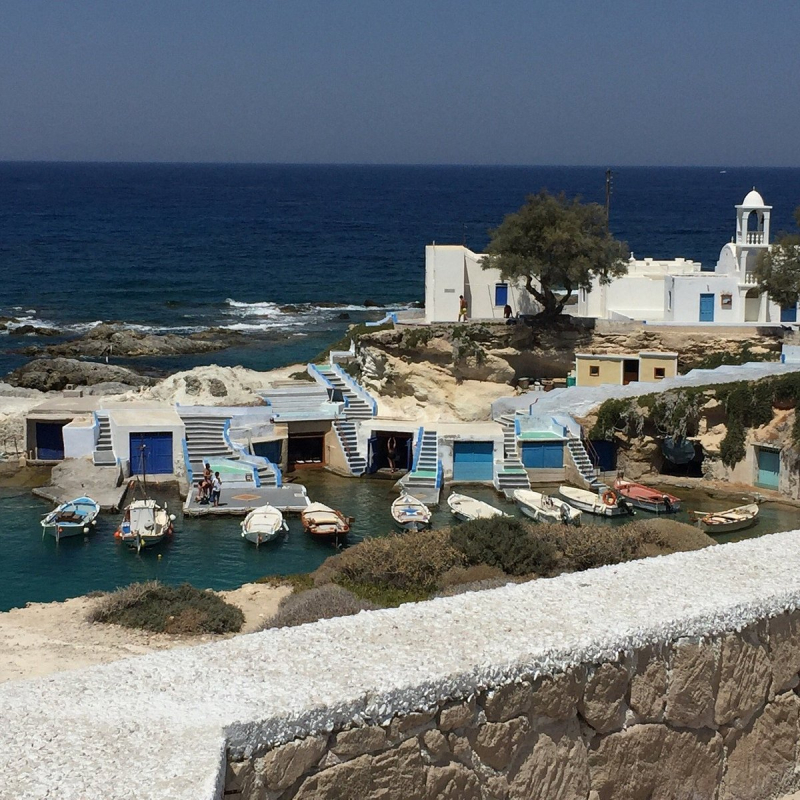
https://www.tripadvisor.co.uk 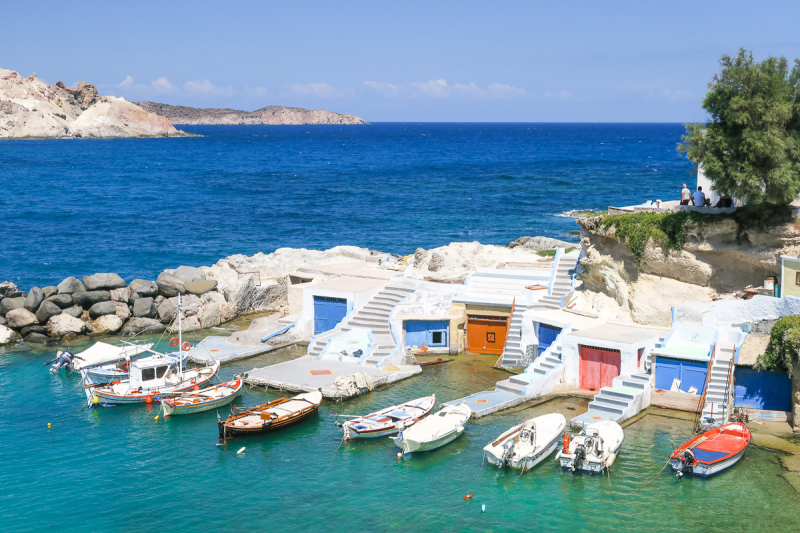
https://www.pausethemoment.com/ -
Loutro, which is situated on Chania's southern coast, is one of the most distinctive towns in Crete. Only on foot or by boat can you get to this special location. Because there are frequent boats to Loutro, many tourists choose to travel there following their journey through the Samaria Gorge.
Only one truck is used in Loutro to bring supplies to the hotels; there are no automobiles or motorcycles there. Its white homes with blue windows are distinctive to Crete and resemble the Cyclades. These homes are a short distance from a sea that is never rough.
The residents of Sfakia once built ships on the Gulf of Loutro, and the local sailors used to sail from Loutro all over the Mediterranean and as far as Russia. Sailing, navigation, and shipbuilding all boosted the regional economy. Ioannis Vlachos, also known as Daskalogiannis, was one of the prosperous shipbuilders and shipowners. He was a prosperous shipbuilder with four huge three-mast vessels that cruised between Mediterranean locations.
- Location: Crete
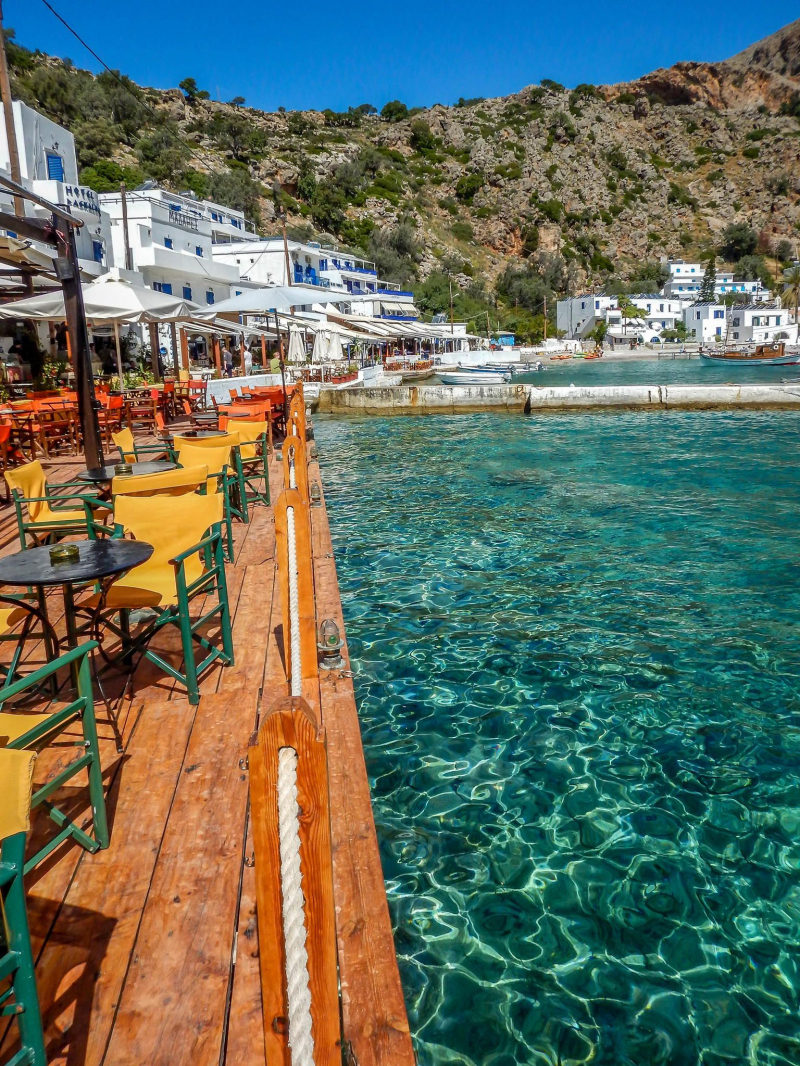
https://www.pinterest.es/ 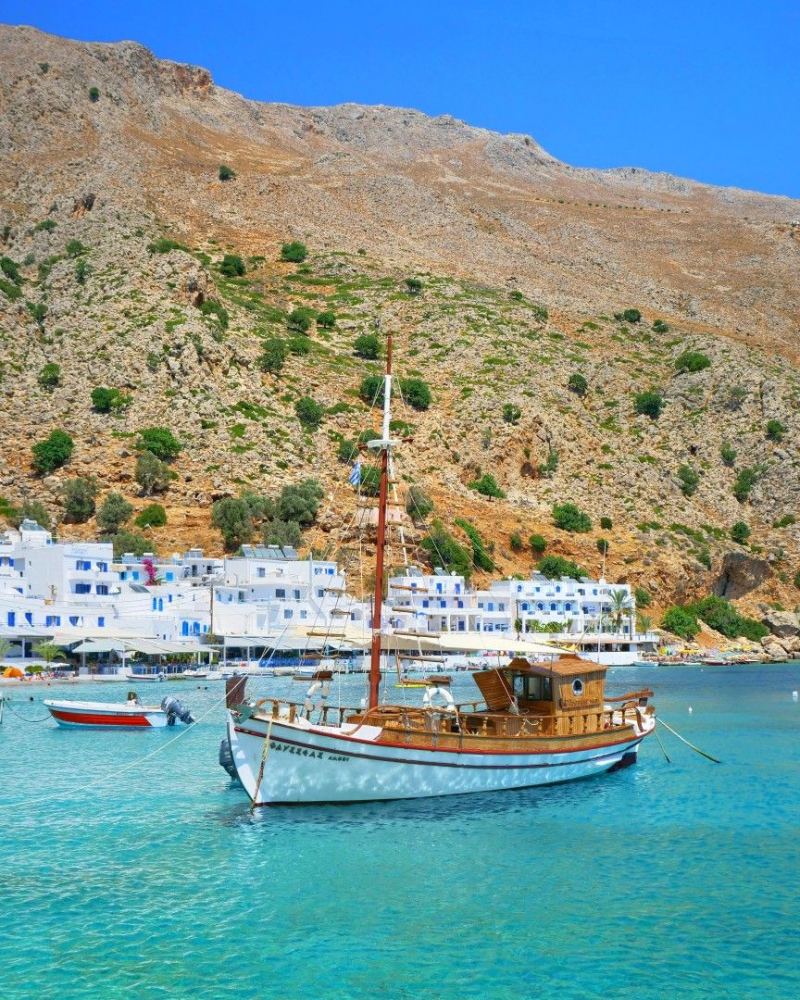
https://www.pinterest.fr/ -
Chora serves as Mykonos's capital. It is situated in the island's eastern region. Chora is situated along a plain rather than a hill, unlike the main cities of other Greek islands and Santorini. Because it is a coastal city with cube-shaped structures and flat roofs, it is beautiful.
It features a labyrinth of cobblestone streets, two-story homes with brightly painted wooden balconies overflowing with flowers, and bougainvillea plants positioned all throughout. It also contains numerous churches and chapels with typical Cycladic style, including white domes with blue or red trim.
Because of its beauty and creativity, this location is sometimes referred to as "Little Venice." Additionally because of its position, which makes it a popular tourist destination. Additionally, there are taverns, cocktail bars, and terraces on the ground floor of the buildings.
- Location: Mykonos
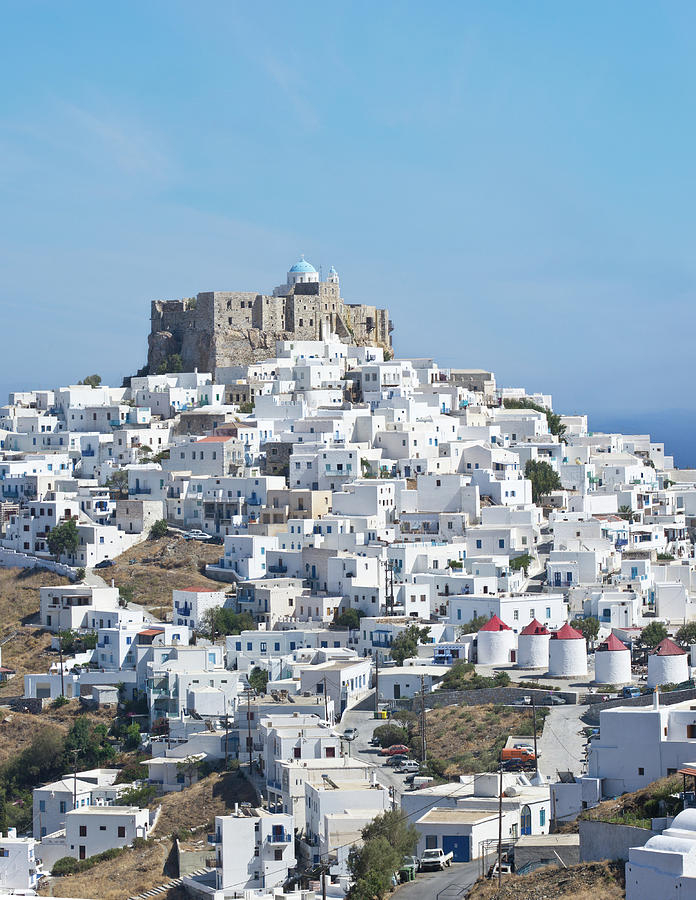
https://photos.com/ 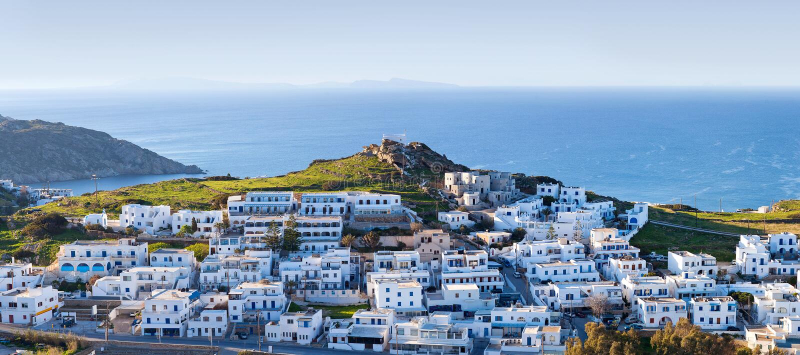
https://www.dreamstime.com/ -
It is possibly the most photographed and requested location on the island of Santorini. His well-known sunset ritual is well-known all across the world. And so, as if it were a rite, the island's residents travel there at sunset to take in this magnificent sight. It is a little town with whitewashed buildings and a narrow alley.
Oia was formerly known as Apäno Meria, a name that is still used there as Pano Meria[6], and the locals are still referred to as Apanomerites (v). One of the two harbors of ancient Thera, the Greek-named Oia was situated where Kamari is today in the southeast of the island.
The surroundings are magical thanks to the many steps and obscure corners. In its various nooks, the most eclectic and bohemian types of craft stores predominate. This village is primarily made up of cafes and patios with vistas and the most serene music. Enjoy its hermitages and churches, particularly the Plátani church, one of Oia's most stunning locations. Its maritime museum is also interesting to check out.
- Location: South Aegean
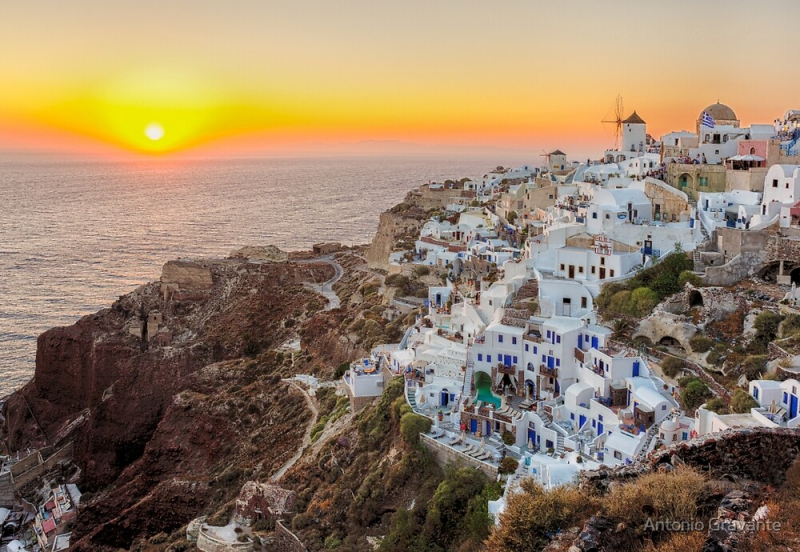
https://www.redbubble.com 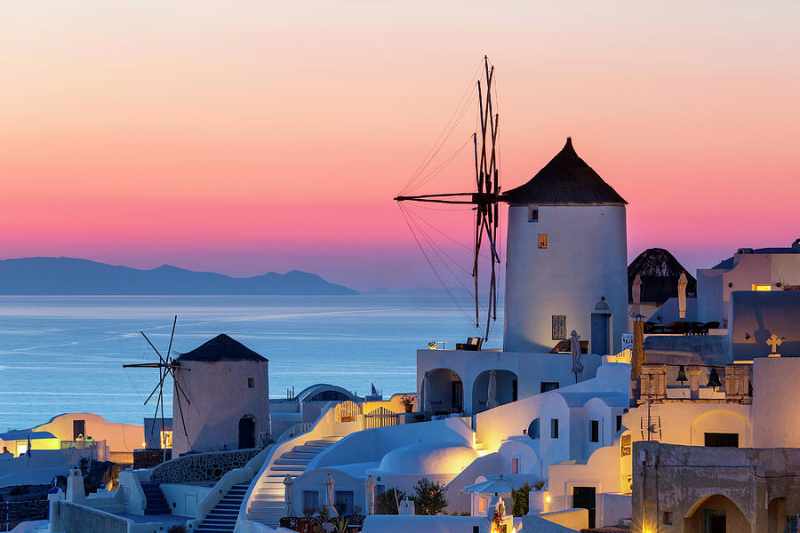
https://fineartamerica.com/ -
No visitor to the island of Paros should miss the triangle formed by Marpisa, Kostos, and these historic settlements. Located 11 kilometers southeast of Parikia, this picturesque village has white buildings and is built in the style of the Venetians. Tourist attractions that stand out are the well-known museum and the Byzantine church of Agia Trias. On the fringes of the settlement, you can witness windmills that have been well restored.
The name "Parian" was coined to denote marble or china of comparable characteristics because Paros was once well-known for its exquisite white marble. However, Paros is largely renowned as a well-liked tourist destination. Today, abandoned marble quarries and mines may be found on the island.
The east coast of Paros is home to a number of beaches, including Golden Beach (Chriss Akt), Pounda, Logaras, Piso Livadi, Naousa Bay, Parikia, and Agia Irini. The strait between Paros and Naxos is a popular windsurfing spot because of the consistent high winds that blow there.
- Location: South Aegean
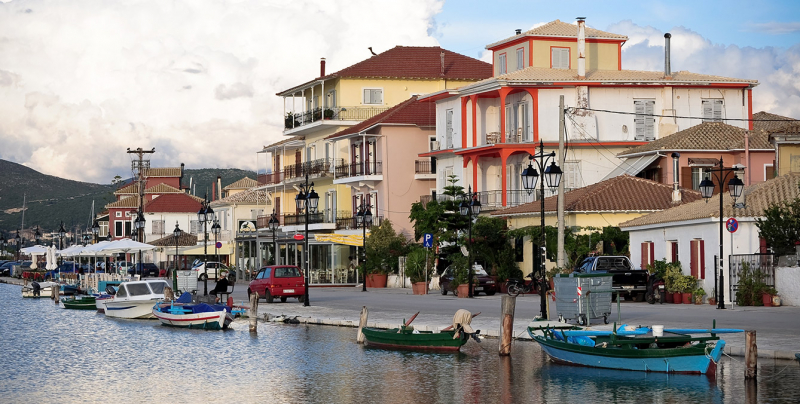
http://lefkas.net/ 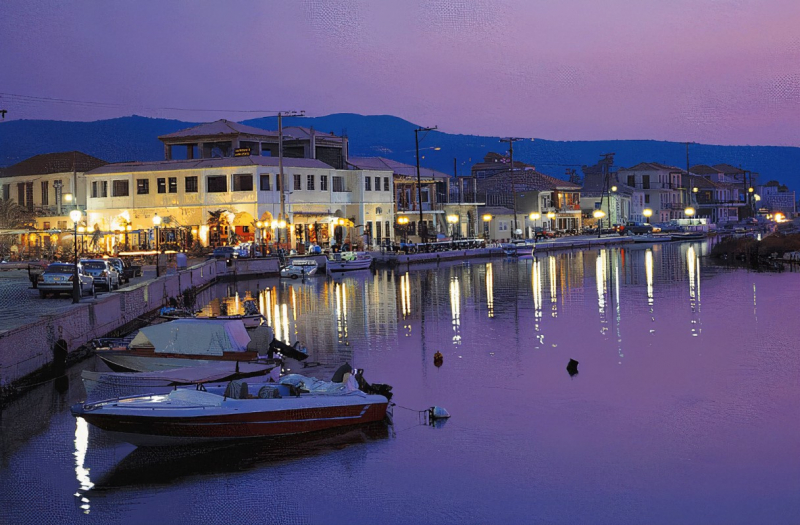
http://www.travel-to-lefkada.com -
Just two kilometers separate Imerovigli, a charming village on Santorini, and Fira, the island's capital. Although the settlement is an outgrowth of Fira, it is situated on a higher rock. The word "Vigla," which means "day," is the origin of the name Immerovigli. Due to the town's advantageous location, locals have seen pirate ships arriving in the past. Immerovigli is a pleasant and tranquil town nowadays.
There are numerous hotels, characteristic residences, and small bars in the region. Skaros, a sizable rock, is seen in front of Immerovigli. Up until the early 1800s, a castle was erected on this portion of the site. All of the government buildings on the island are occupied by the castle. Following an earthquake, this portion of the island disappeared, leaving only the enormous hill upon which it formerly stood.
All of the churches in Imerovigli were constructed in the Cycladic style. They consist of the Saint Nikolaos Monastery, which is located on the path that connects Imerovigli to Fira, and the Ai-Stratis Church, which is located in the village's center. The ruins of a Venetian castle built in 1207 by Marco Sanudo, who was in charge of all the Cyclades at the time, are located on the neighboring Skaros Rock. There are 470 residents who live there permanently.
- Location: Santorini
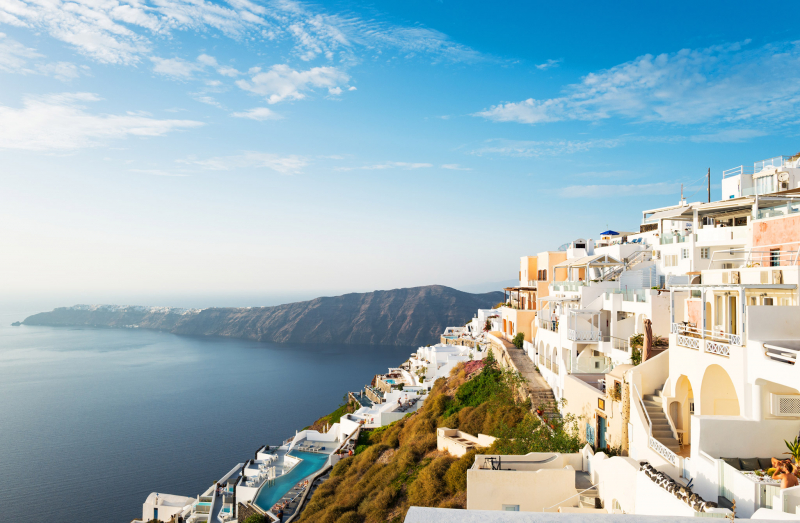
https://santorinibesttours.com/ 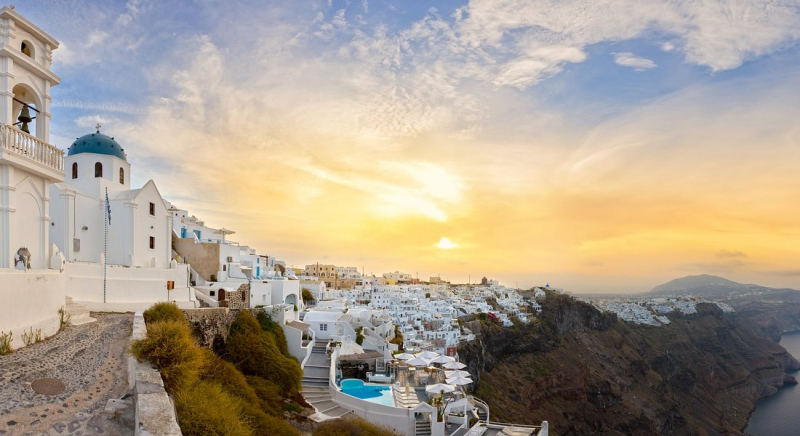
https://www.tripadvisor.ca/ -
Pyrgos is a village on the Greek island of Santorini in the Cyclades archipelago. Pyrgos is a part of the Municipality of Thira and is located about 7 kilometers from the island's capital Fira. It is situated atop a hill with excellent views of Santorini in practically every direction and is constructed amphitheatrically. The remnants of a Venetian fortress (Kasteli), which once served as the island's administrative hub, are still visible on top of this hill. With its winding, winding lanes, guarded walls, and secret passages, Pyrgos is a classic example of medieval architecture. It is currently one of Santorini's villages that has been least damaged by tourism.
Pyrgos, which was built on top of a hill and has typical dwellings arranged around an existing Venetian castle, served as Santorini's capital until 1800. Now, its narrow streets contour to the slope.The stone houses get closer together as you make your way up the square to Pyrgos Castle, and the streets start to resemble a maze designed to confuse and torture tourists. Pyrgos features about 33 churches, although the Profitis Ilias Monastery is the most well-known. Pyrgos is a wonderful city and one of the most picturesque places on the island, but it has only just begun to acquire popularity among tourists. It is famous for its spectacular Easter most of all.
- Location: Santorini
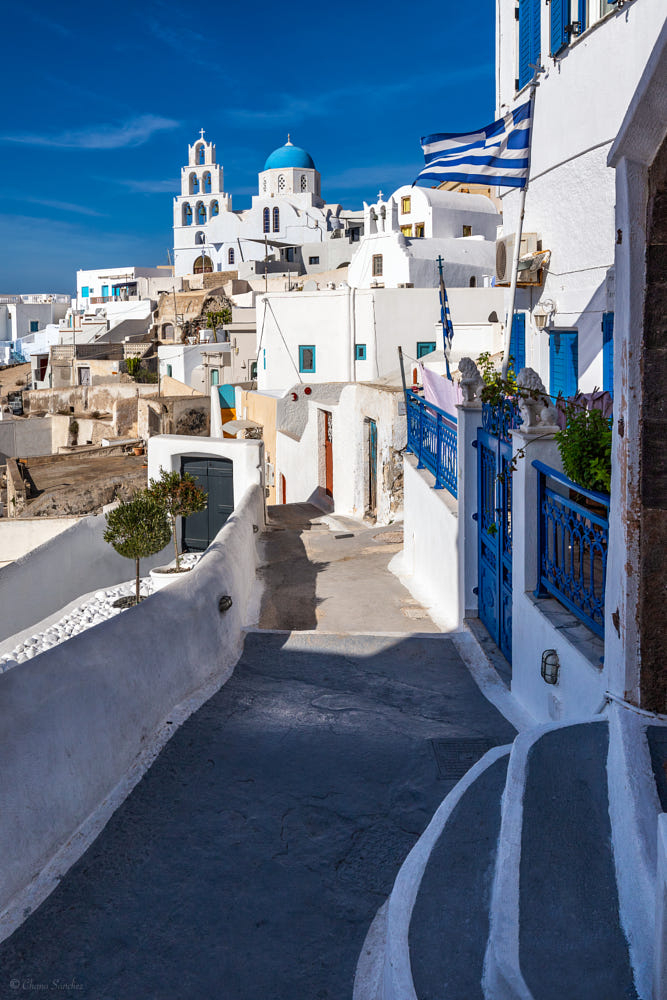
https://www.pinterest.com 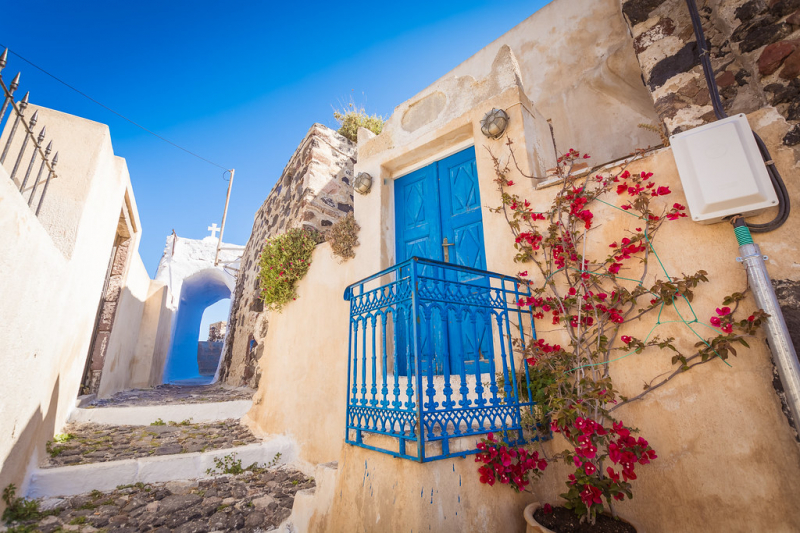
https://www.flickr.com/ -
Also, Nafpaktos is among Greece's most stunning coastline towns. It is a beautiful town with a rich history that is visible in the Venetian structures there, such the harbor and the castle. It is a significant tourist hub due to its beautiful beaches and neighboring cities.
On the northern coast of the Corinthian Gulf, the sizable seaside community of Nafpaktos has a long beach, a grand Venetian fortress, and a guarded harbor. Due to its proximity to the western entrance to the gulf, it served as a significant Athenian naval station during the Peloponnesian War. Lepanto was the name given to it by the Venetians who seized power. It was conquered by the Ottoman Turks in 1499, and in 1577, the Holy League, led by Venice and Spain, defeated the Ottoman navy there in the Battle of Lepanto. With more than 400 ships participating, it was the largest and final naval engagement of rowing ships. The conflict put an end to Ottoman expansion into Western Europe.
In some ways, the battle was just as significant as the Battle of Salamis, which put an end to Persian expansion, in that it signaled the end of Ottoman advance into Western Europe. Despite being routed at sea, the Turks maintained their hold on Nafpaktos until the Greek Revolution of 1821. The author of Don Quixote, Miguel de Cervantes, lost use of one arm in the conflict. El manco de Lepanto is how the Hispanic community refers to him (the one-armed man of Lepanto). In the port, there is a statue of Cervantes.
- Location: West Greece
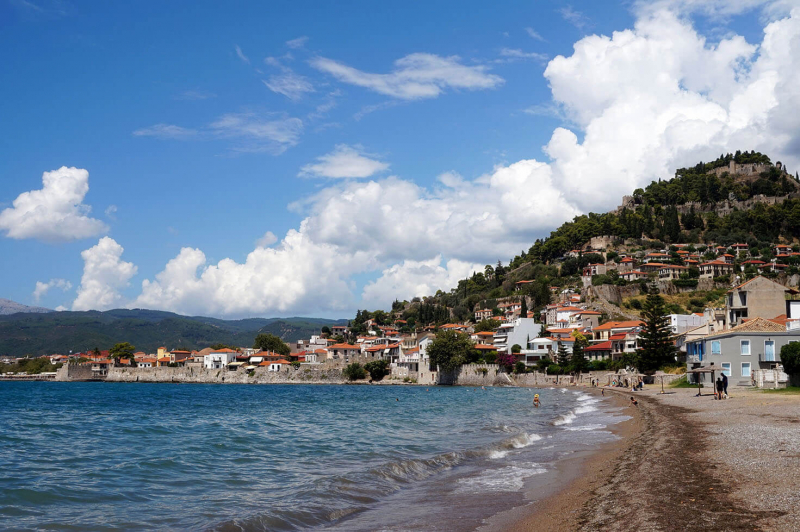
https://happyfrogtravels.com 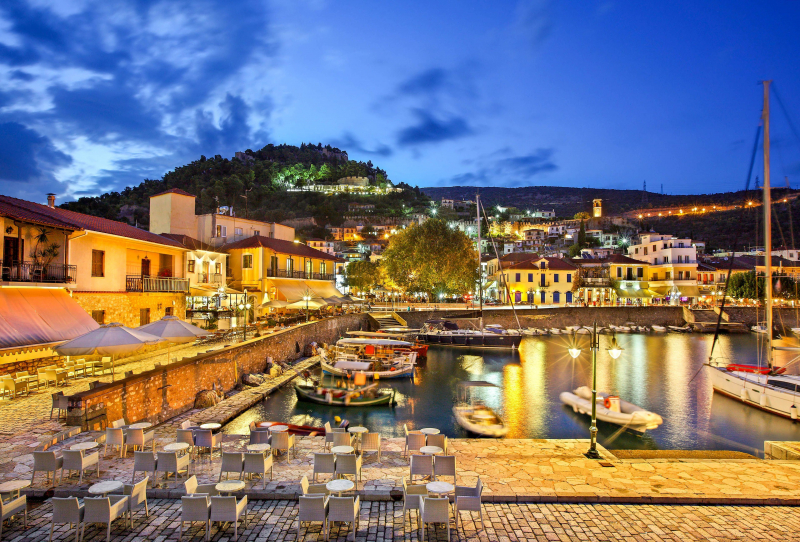
https://www.greeka.com/ -
Also, Nafpaktos is among Greece's most stunning coastline towns. It is a beautiful town with a rich history that is visible in the Venetian structures there, such the harbor and the castle. It is a significant tourist hub due to its beautiful beaches and neighboring cities.
Going up to the Byzantine castle after lunch to take in the magnificent views of the bay is one of the suggestions in this town. You can enjoy a drink on the beach after dark. in one of the many bars that are present throughout the city. Molyvos, or Mithimna as it was known in the past, has maintained its traditional character over time and was designated a protected hamlet by the authorities in 1965. Stones and wood are used to construct every home.
The community is arranged amphitheatrically, with a castle perched atop and traditional homes extending all the way to the picturesque harbor and coastal road. The second-largest fortification on the island of Lesvos is the castle of Molyvos, which is perched atop a rocky slope. It was built over the ruins of an old fortification during the Byzantine era. It had a crucial role because of its advantageous location, which allowed it to control the northern entrance to the bay. One of the best preserved castles in the Eastern Mediterranean, it hosts numerous cultural events during the summer.
- Location: Lesbos
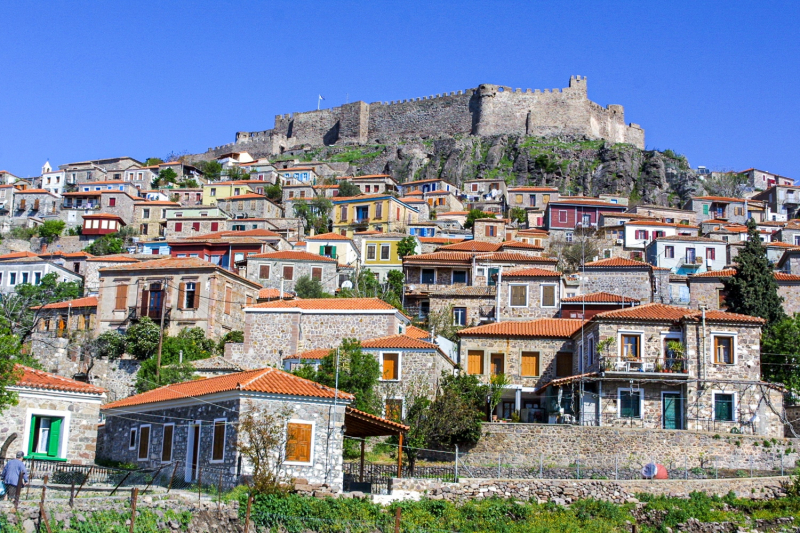
https://travelsnapz.com/ 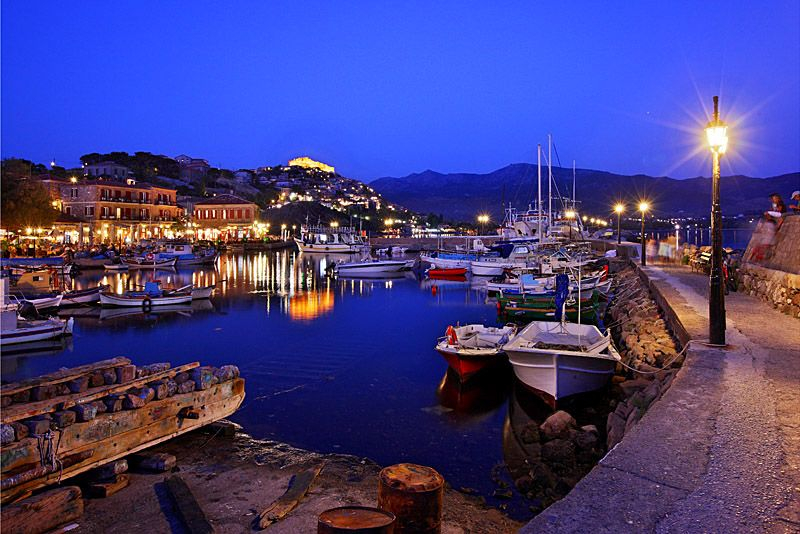
https://www.pinterest.com/ -
Western Greece's Preveza town is situated at the mouth of the Amvrakikos Gulf. It is a region blessed with lovely scenery, lush areas, fantastic beaches, a rich history, ancient sites, and monuments; to put it simply, you will discover here a wide variety of possibilities for wonderful vacations. Wander through the harbor and the old town to admire the stunning traditional architecture; stroll down the seafront pedestrian strip to take in the island-like ambience; and sample regional cuisine in one of the charming tavernas or coffee shops that line the winding, slab-paved backstreets.
You may find local administrative, commercial, cultural, and tourist services at the Preveza Regional Unit's capital. The ancient Vereniki town, which Pyrrhus, the Greek King of Epirus, erected in 290 BC, was the foundation for the modern city of Preveza. Preveza was constructed in the late 11th century, after the ancient town of Nikopolis had been abandoned. Up to 1912, it was repeatedly conquered before becoming a part of Greece.
It has a stunning old town that draws hundreds of tourists each year. Due to its advantageous location by the sea, it is a lovely area to explore, take evening walks along the coast, and sample Epiriot cuisine in one of the numerous local pubs.- Location: Epirus
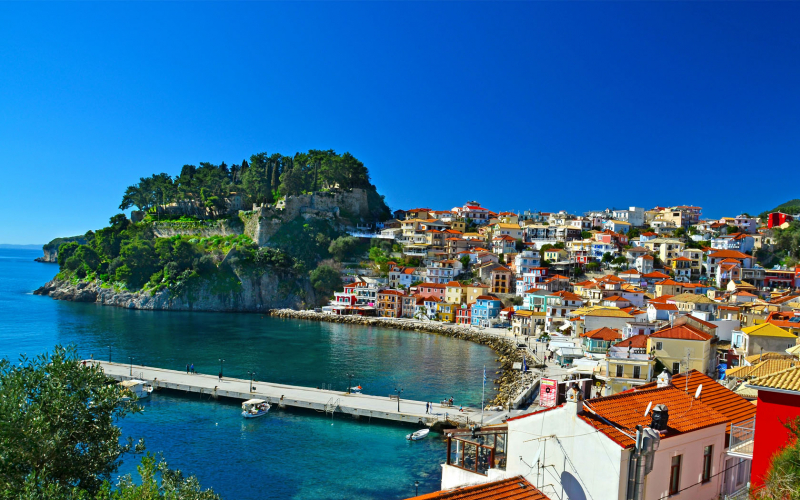
https://www.holidaywarehouse.co.uk 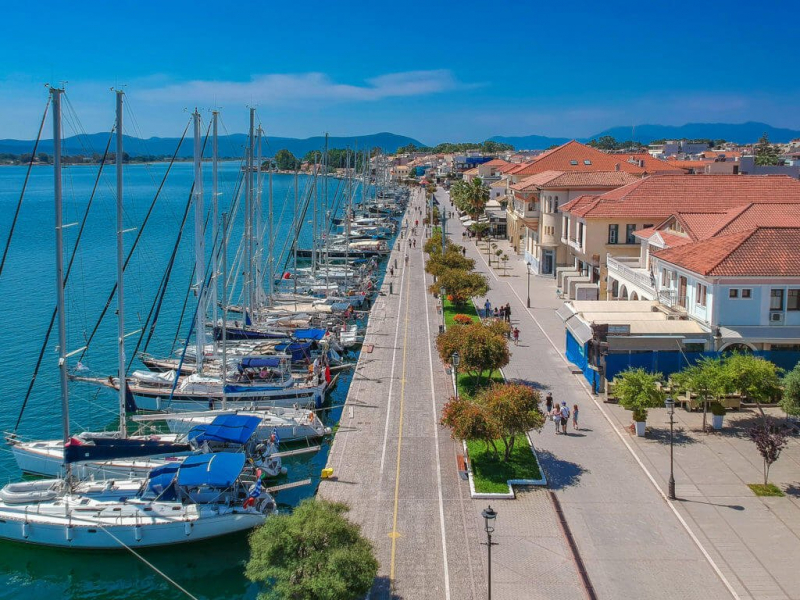
https://www.steppestravel.com/
















